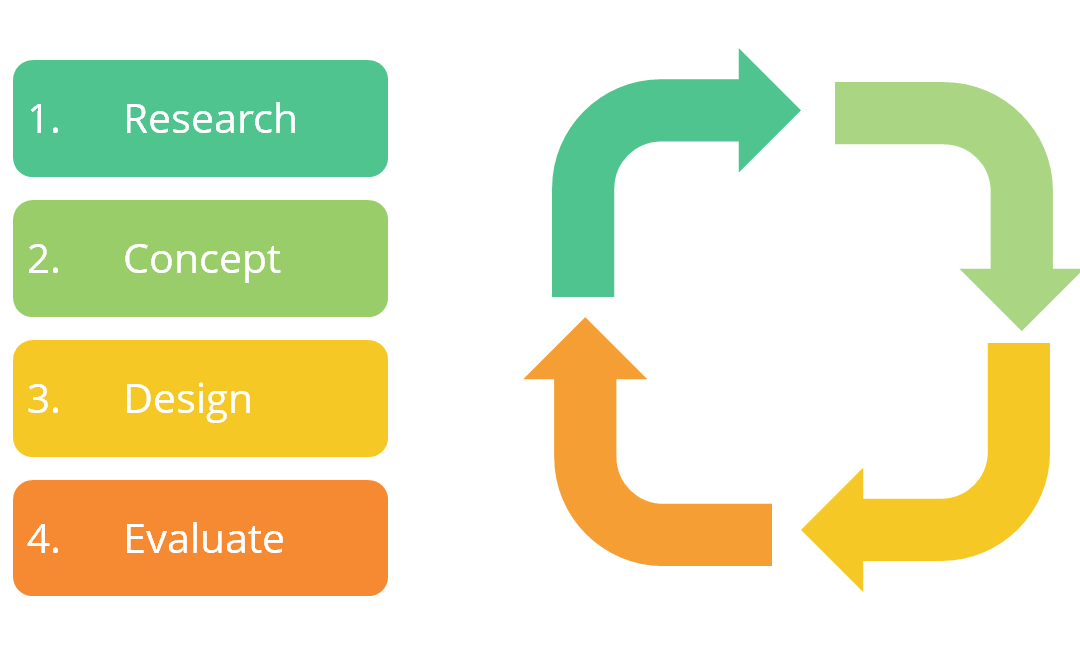In a previous blog, I discussed user testing and its importance in validating the designs of the new Stockport Council and Healthy Stockport websites.
User testing, however, forms part of a wider design process – known as user centred design (UCD).
In its most basic form, UCD is as simple as the experiences it aims to deliver. It revolves around the idea of four steps – research, concept, design and evaluate.
This is a continual problem solving process that ensures we constantly validate our design decisions with real world users.
What do these steps means?
Research: This is the process of gaining an initial understanding of user needs. This is an important starting point because it allows you to build something based upon validated assumptions.
Concept: This is where designers can begin to unload their ideas, through various methods including discussion, sketching and wireframing.
Design: The design process draws together and formalises the ideas of the concept stage and builds something that can be put before users and tested.
Evaluate: The process of testing your designs with real world users.
Once a cycle of these four steps has been completed, the process occurs once again. This allows for a continual approach to meeting user needs.
Why do we use UCD?
UCD ultimately aims to provide answers to the age old question of who, why, how, when and where.
Who are the users?
What do they want to do?
How do users think this should work?
When are they going to use this?
Where are they going to use this?
These are the types of questions that designers must constantly ask themselves throughout the UCD process.
It’s easy to assume that a user will do a certain thing or understand a particular action, however there are no guarantees that your expectations as a designer are going to be met. This is a key reason as to why the UCD process is so important.
We’re all in this together
While much of what I have written about relates to designing websites, the UCD process can be applied to almost anything. Council services can adopt certain elements and apply them to their business processes in order to ensure that users are receiving the best possible service.
The most important, and hardest, part of UCD is opening yourself up to the public. Ignoring users is a mistake that is made all too often because it is so easy to do so. Negative feedback isn’t always easy to take, but it’s a vital part of improving the service you’re providing.
It’s not just the website that is focusing on the user – it’s the entire Council.

